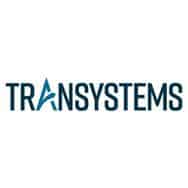In this episode, I talk with Brad Clause, global account executive at VideoRay, about the innovations behind VideoRay’s Mission Specialist Underwater Robotic Systems, their unique features, and their adaptability. We also explore their applications, partnerships, and exciting future developments.
***The video version of this episode can be viewed here.***
Engineering Quotes:
Here Are Some of the Questions I Ask Brad:
- Can you discuss VideoRay’s mission specialist, and underwater robotic systems and how they have redefined the inspection class category?
- What is a high-level example of a project where a customer utilized one of your products?
- How do the power and maneuverability of these robots contribute to their effectiveness in navigating challenging environments?
- When it comes to mission planning, is it more of a desk-based activity before heading into the field with the robot, or does it involve a combination of office and on-site work?
- How do these robots operate at significant depths for extended periods, and what factors contribute to their ability to do so?
- What kind of mission would require the vehicles to stay underwater for an extended period?
- Can you provide examples of organizations that offer accessories to enhance the vehicles for specific use cases, expanding their functionality?
- How has the technology benefited the U.S. Navy as one of your clients?
- Can you discuss the advantages of deploying robots in hazardous situations instead of humans?
- How has your experience been integrating VideoRay’s systems with AEC workflows, and could you offer insights into the types of projects they are involved in?
- What are some other commonly encountered built-world assets where the application of underwater vehicles and technology could be beneficial?
- Can you provide insights into the organization and share what they are incorporating into the realm of video?
- What new things are you expecting in the future for underwater vehicles, and how do you think these changes will affect your customers, especially those in the AEC sector?
Here Are Some Key Points Discussed in This Episode About Next-Generation Underwater Robotic Systems:
- In underwater inspections, the Pro 5 and Defender vehicles excel in power and performance, navigating currents over 4 knots effortlessly. Their Ethernet-based system offers a plug-and-play setup for accessories, ensuring quick recovery within 5 to 10 minutes in case of failures. The open architecture allows users to troubleshoot and swap components easily, making it a user-friendly solution even for non-experts. This technology is a game-changer for for-profit businesses, minimizing downtime and project disruptions.
- In the offshore wind turbine sector, these vehicles are crucial for tasks like initial underwater inspections, cable and MONOPILE planning, and ongoing asset management. They use advanced accessories, like UT sensors and cathodic protection, and collaborate with innovative camera technology for real-time 3D modeling during inspections, covering structures from piers to bridges.
- In hydroelectric environments with strong currents, these vehicles excel in autonomous inspections, covering large areas with minimal supervision. Using a DVL/GPS combo, they precisely navigate near the bottom, enhancing their effectiveness in inspecting football field-sized areas. The station-keeping feature is invaluable in high currents, providing a stable platform for enhanced sonar and video imagery, meeting over 90 percent of customer requirements.
- Mission planning is flexible — you can pre-program the vehicle before heading to the field or adjust plans on-site based on real-time subsea imagery, ensuring precise and adaptable inspections for optimal effectiveness.
- The vehicles can keep diving without a time limit. Some customers have used the Defender vehicle for about six months straight without any ascent or recovery.
- The vehicles stay underwater for extended periods to monitor things, keeping a constant eye on a widget or object and maintaining a constant visual on that object.
- Different companies, like those dealing with sonar, cameras, and manipulators, work together to enhance the vehicles. With around 10 manipulator options, they can be customized for tasks like cleaning, showcasing their versatility for specific needs.
- The technology has not only proven beneficial to the U.S. Navy, but has also mutually benefited the collaboration, with advancements in technology derived from the partnership. Emerging commercial products trace their origins to this collaboration. The primary focus lies in autonomous operations for mine detection, identification, and disarmament, illustrating the evolving capabilities of the vehicles.
- In the past, EOD personnel and divers were used, but now there is a growing preference for using equipment instead of people. This shift reduces risks significantly, prioritizing safety by avoiding putting individuals in harm’s way.
- The vehicles equipped with VideoRay systems are essential for dam inspections, identifying issues, and assisting in maintenance planning. In tunnel inspections, they autonomously scan up to 5,000 meters, creating detailed 3D models for analysis.
- The primary applications for underwater vehicles and technology involve visual and sonar inspections, widely utilized in markets like oil and gas and offshore wind for tasks such as inspecting structures. Currently, the focus is on resident vehicles, ensuring a constant subsea presence 24/7 at specific assets. This advancement aims to facilitate timely inspections and responses, offering a dynamic solution for various industries where the technology is rapidly gaining ground.
- VideoRay introduces Octo View and Octo Camo, with Octo Camo providing a 360° camera view for navigating challenging areas. Octo View, evolving over the next five years, replaces traditional interfaces with a headset for enhanced geospatial awareness during operations, offering exciting advancements in underwater vehicle technology.
- The advancements center around achieving autonomy in underwater vehicle technology, moving beyond supervisor autonomy. The vision involves combining autonomy with resident vehicle capabilities, allowing operations up to approximately a mile away. It entails full telemetry and video communication subsea, enabling autonomous tasks. With a simple internet link or LT, signal users can instruct the vehicle to inspect specific areas without an on-site pilot, marking a significant breakthrough.
More Details in This Episode…
About the Guest: Brad Clause

About the Host: Nick Heim, P.E.

Nick’s interests lie at the intersection between the built world and technology, and he can be found looking for the ever-changing answer to the question, “How can we do this better?” Nick can be found on LinkedIn, producing content about use of technologies in his civil engineering career and small business.
Sources/References:
VideoRay
Offshore Hydroelectric
UT Sensors
3D Point Cloud Modeling
Spot the Robot Dog
Sonar Imagery
Video Imagery
Defender Vehicle
Blue Ring Imaging
Apple Vision Pro
U.S. Navy
AEC
Connect with Brad Clause on LinkedIn
Send Brad an Email
We would love to hear any questions you might have or stories you can share on how you can utilize next-generation underwater robotic systems.
Please leave your comments, feedback, or questions in the section below.













